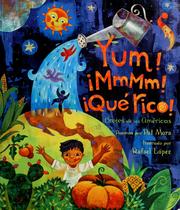JINGLE DANCER
By Cynthia Leitich Smith Illustrated by Cornelius Van Wright and Ying-Hwa Hu
Image Credit: cynthialeitichsmith.blogspot.com
1. Bibliography
Smith, Cynthia Leitich., Wright Cornelius Van, and Ying-Hwa Hu. Jingle Dancer. New York: Morrow Junior, 2000. Print. ISBN 9780688162429
2. Plot Summary
Jenna is a girl of who dreams of dancing during the powwow. She is a descent of the Muscogee (Creek) and Ojibway (Chippewa/Anishinabe) descent and this dance is a family tradition. Jenna has been practicing this dance and seeks her grandmother's permission. To dance in the powwow, Jenna must have a dress with jingles. Jenna seeks out members of her family to get enough jingles. She finally has enough jingles and proudly dances for each person who loaned her jingles for her dress.
3. Critical Analysis
This fictional story by Cynthia Leitich Smith is a simple story about a girl who wants to continue the family tradition of dancing at the powwow. The characters are portrayed in the modern-day with Jenna's cousin as a lawyer, Mrs. Smith living in a duplex, and Grandma living in a modern neighborhood. We also see characters who care for one another, especially Jenna. "'May I borrow enough jingles to make a row?' Jenna asked, not wanting to take so many that Aunt Sis's dress would lose its voice." This book also includes an author's note telling the readers more about Jenna's descent as well as more information about the jingle dance and attire.The author also included a glossary for some words that most people will need to refer to.
There are many cultural markers present in this story which include references to various food, dancing at the powwow, and clothing that Jenna had to wear at the powwow. We see the reference to Indian tacos and fry bread. We also see phrases such as "As Moon kissed Sun good night" that lets the readers know that this story is of Native American people. One cultural marker lacking is the use of Native American language. We also see the importance of the number four while Jenna is gathering enough jingles to make four rows.
The illustrations done by Wright Cornelius Van and Ying-Hwa Hu are full page watercolor illustrations. These illustrations include many bright colors and would be good for a storytime read aloud. Throughout the illustrations we see people of light brown skin along with many other cultural markers. These include Indian shoes, artifacts, baskets, and a pouch for carrying the jingles.
4. Reviews Excepts
~SCHOOL LIBRARY JOURNAL (7/2000): "An author's note and glossary tell more about the Muscogee (Creek) Nation, the Ojibway origins of jingle dancing, and the significance of the number four in Native American tradition. This picture book will not only satisfy a need for materials on Native American customs, but will also be a welcome addition to stories about traditions passed down by the women of a culture."
~KIRKUS REVIEW (4/2000): "The layout of the book is straightforward--mostly double-page spreads that extend all the way to the edges of the paper. Jenna lives in what looks like a nice suburban house, the others seem solidly middle-class, and cousin Elizabeth is a lawyer. The author is deliberately showing us, it would seem, that all Native Americans are not poor or live on rundown reservations. A useful portrayal of an important cultural event in a Creek girl's year."
5. Connections
~Students could research more about the Muscogee (Creek) Nation and the Ojibway (Chippewa/Anishinabe) descent.
~Students could read other books by Cynthia Leitich Smith and visit her webpage.




